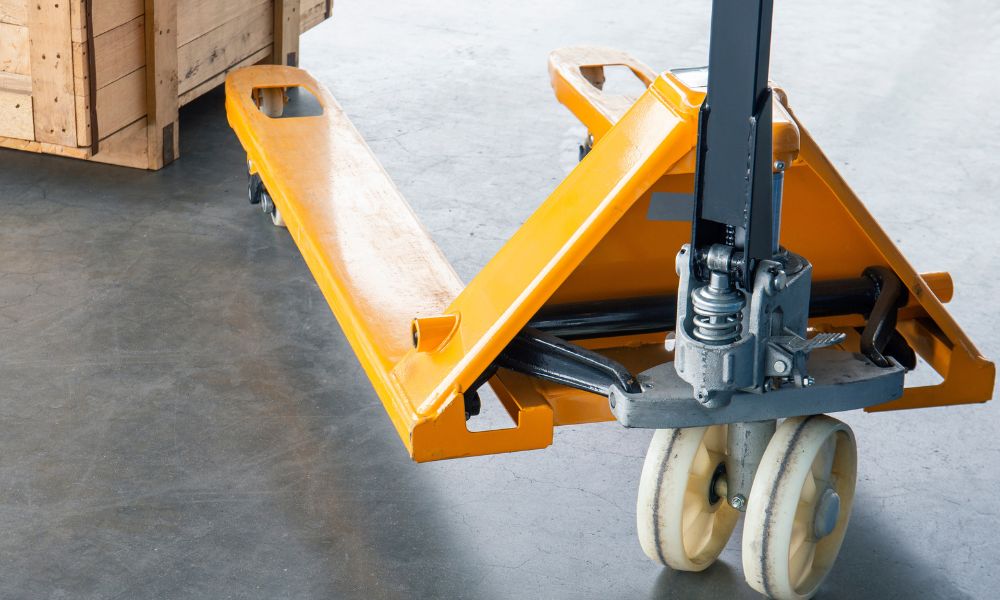Prioritizing workplace safety is paramount when working at a warehouse distribution facility. One way to keep yourself safe is by learning the proper ways to lift and move pallets safely.
With the right techniques and knowledge, you can prevent pallets from becoming a hazard. Learn more about smart lifting techniques, forklift safety, and proper pallet stacking to help you stay safe on the job.
Smart Lifting Techniques When Moving Pallets
Properly lifting a pallet can prevent serious injuries and accidents from occurring. First, you should always assess the load before lifting. Doing so will help you determine whether you can handle the load without straining your body.
When lifting, keep your feet shoulder-width apart, bending at the knees, not the waist. This posture helps distribute the weight more evenly and reduces strain on your back. You should also keep the pallet close to your body and rise using your legs to make lifting easier.
Finally, it’s essential to wear the appropriate safety gear when at the warehouse facility. Wearing gloves and sturdy footwear can help you avoid slipping and give you a better grip when lifting pallets.
Forklift Safety When Transporting Pallets
Forklifts are a great tool when you need to move many pallets at once. However, they come with their own set of safety considerations. For example, you should always inspect the forklift before use, checking for any mechanical issues that could pose a risk.
When transporting pallets, keep the load low to the ground to maintain stability and a clear line of sight. Be mindful of your speed and the surroundings, especially when turning corners or navigating through narrow aisles.
How To Properly Stack Pallets in a Warehouse
Proper stacking is key for efficient space utilization and accident prevention. Here are some top tips for pallet stacking in a warehouse distribution center:
- Stack pallets squarely and straight, aligning them correctly to avoid overhanging.
- Adhere to the recommended stacking height based on the pallets’ weight and strength.
- Use signage to indicate the minimum stacking heights.
- Stack and organize the pallets in designated areas to keep walkways clear.
Pallet Types That Are the Easiest To Lift
While several pallet types exist, ranging from wood to plastic, some are easier to lift and move. For example, plastic pallets are lighter than their wooden counterparts and don’t have nails or splinters that can cause injuries.
However, for the ultimate lightweight and easy-to-handle options, corrugated cardboard pallets from First Alliance Logistics Management stand out. They’re significantly lighter than other pallet types, making them ideal for manual lifting. They’re also recyclable, which is a bonus for environmentally conscious operations.
Understanding these tips on how to lift and move pallets safely will help you and your team operate efficiently and without injury. These strategies form the backbone of a safe working environment. Look for pallets that blend lightweight handling with environmental benefits—doing so will help your warehouse maintain safe practices without sacrificing productivity.

